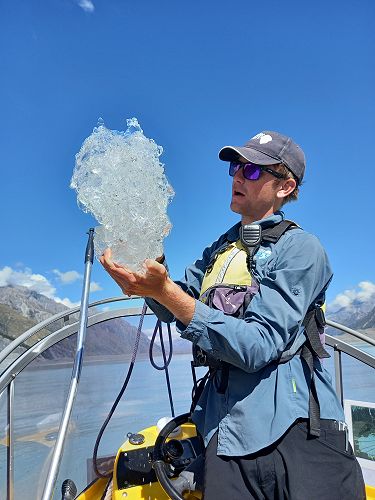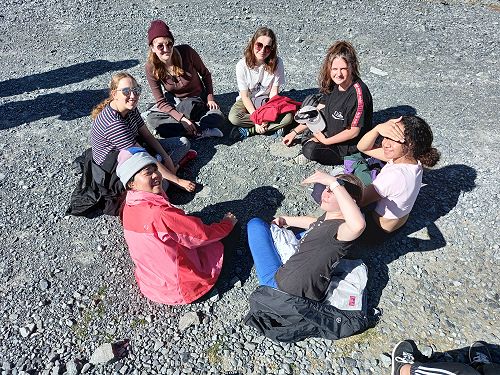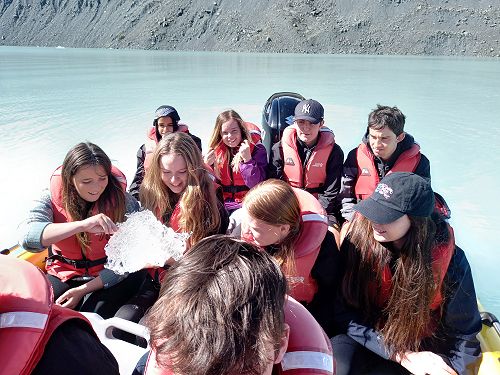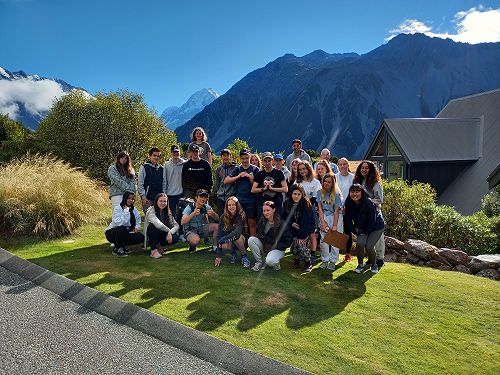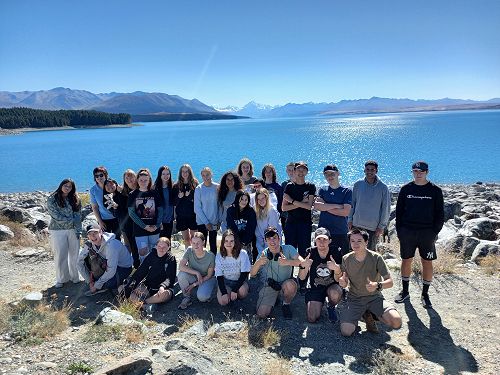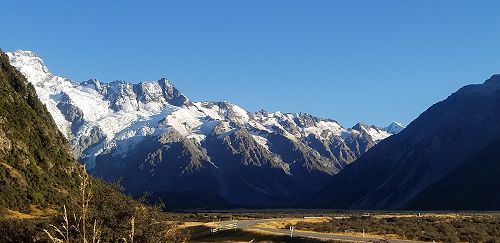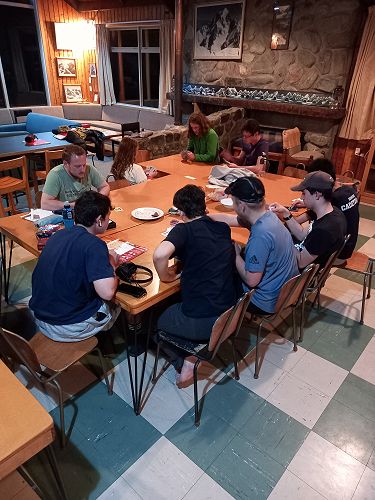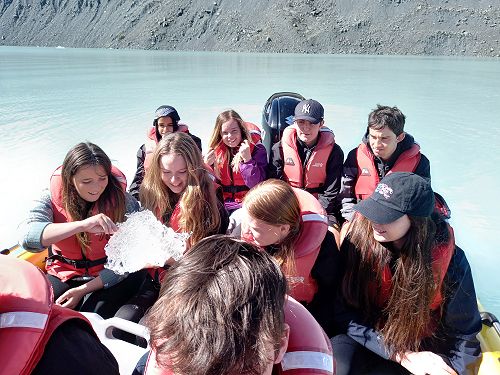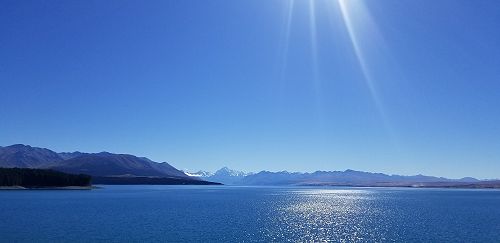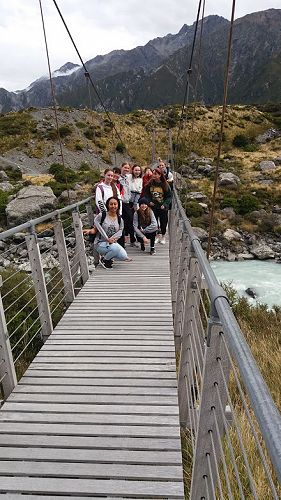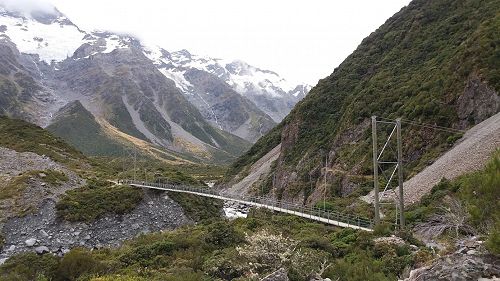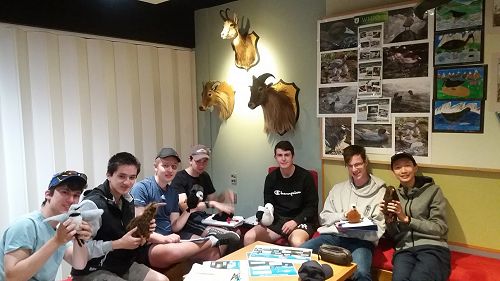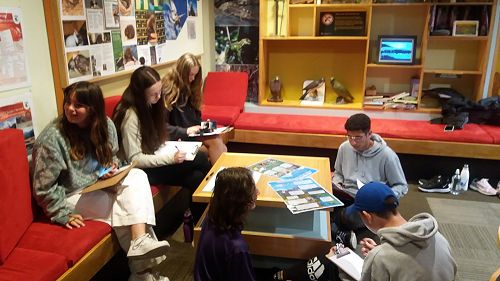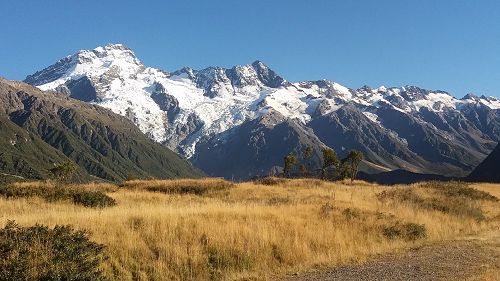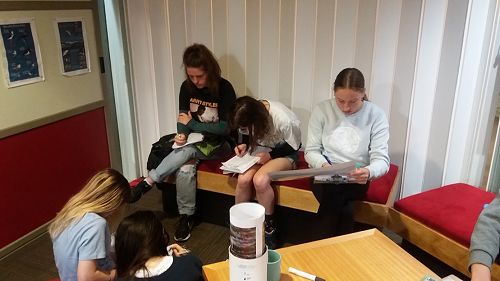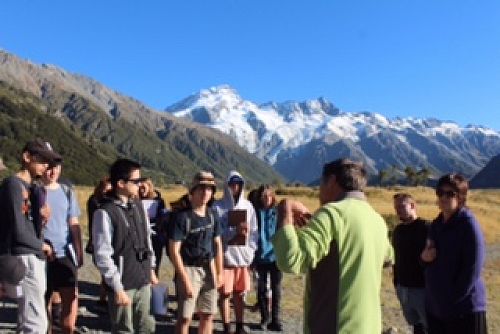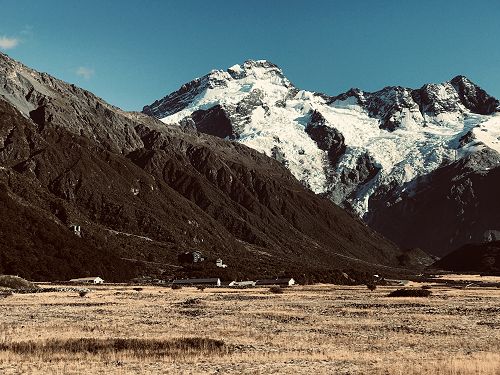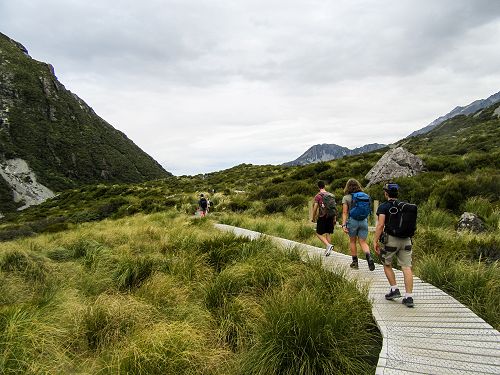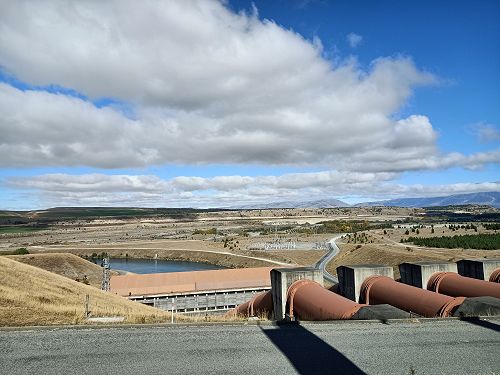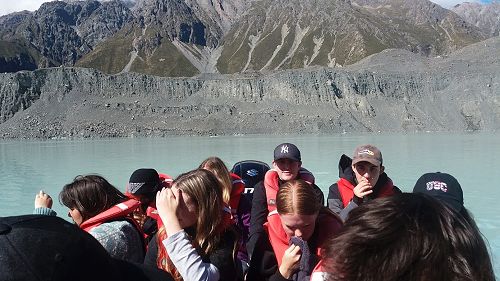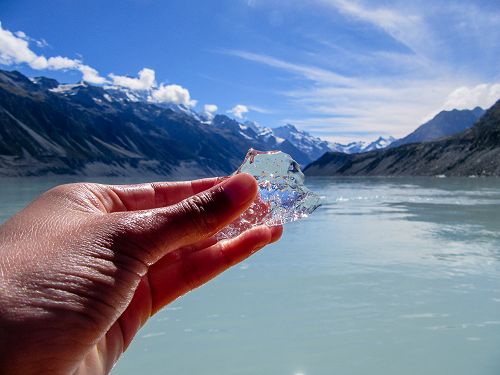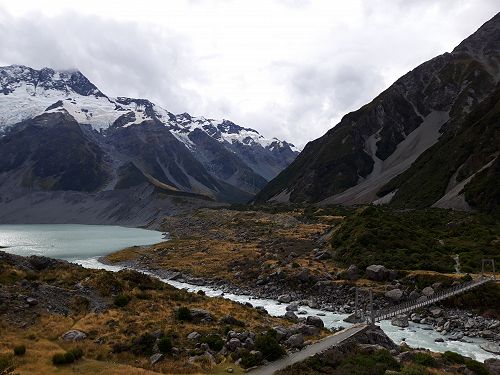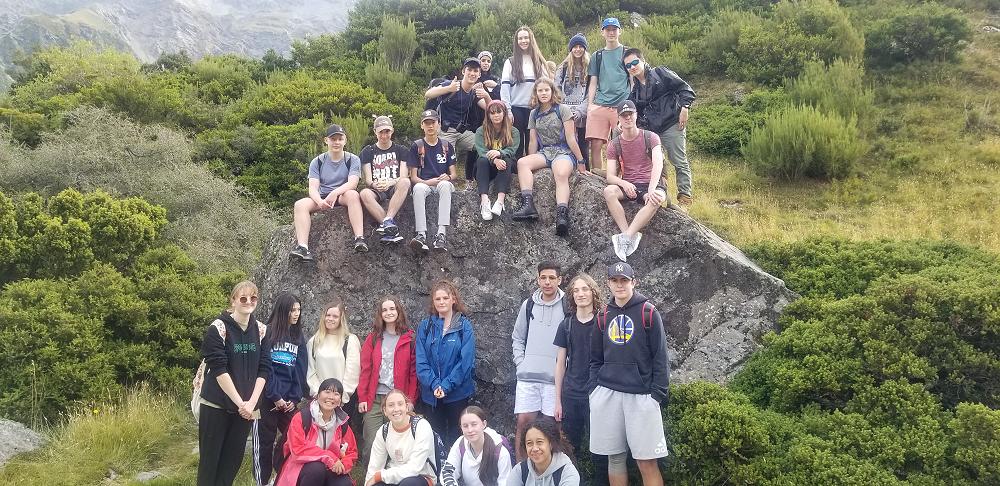
A trip to remember Aoraki Mt. Cook Geography Trip 2021
A much-anticipated event on the Year 12 Geography calendar; a group of intrepid students set off on our annual three-day alpine adventure. The field research mission was to explore how this unique natural environment has evolved and to gain insight into how humans have interacted with the landscape - past, present and future.
It was at the crack of dawn on Tuesday 30th March when everyone met at the Aurora Centre ready to load the bus and leave. Departing on schedule, we stopped at Rakaia for a quick comfort break before proceeding to Geraldine. After supporting the local businesses at Geraldine, we drove to Lake Tekapo for a lunch break. Surrounded by the jaw-dropping scenery, we set off to explore the local area, visiting the Church of the Good Shepherd, the local shops and the new waterfront development. Many students took an interest in the flying fox at the new playground area. Our final stop before reaching our accommodation was at Lake Pukaki for a group photo, the remnants of past glaciation. Unfortunately, the weather was not on our side, with Aoraki Mt Cook hidden behind the clouds and Lake Pukaki not displaying its famous blue tint. With the group snapshots taken, some of us went down to the lakeside. It was here where one student had a slight mishap slipping into the shallow water on the lake shore. Slightly delayed and a change of clothes later, we were on our way to our accommodation; Unwin Hut, an alpine lodge tucked in next to the mountains giving us the rustic alpine experience. This lodge was conveniently located approximately 3km away from Aoraki Mt Cook village making travelling easier for the whole group. After an hour's rest, we stretched our legs with the Hooker Valley Track walk, a track passing the location of the old Hermitage Hotel, Freda's rock and the viewing point of Mueller Glacier. This walk was very educational, giving us a first-hand experience of the changes and processes going on in the natural environment such as the old glacial moraines. Due to time constraints, we only made it halfway between the second and third swing bridge before we had to turn back. To finish the day, we were served a delicious meal of burgers and chips at the Old Mountaineers Restaurant with ‘front-row’ views of Aoraki Mt Cook.
Wednesday was an early start, with the students managing to witness the sunrise, making for great photo opportunities. We started our Day 2 programme with a 'behind-the-scenes' guided tour of the national park's recycling centre, water treatment plant and oxidation ponds giving valuable insight into the processes behind running Mt Cook from DOC’s perspective. After this, the class retired for morning tea outside the DOC Mt Cook visitor centre. The class was then given a presentation about glaciers inside the visitor centre by DOC worker Janine Martig. This presentation gave valuable insight into the formation of glaciers, signs of past glaciation and what types of glaciers there are within Mt Cook and around the world. Shortly after this, we looked around the museum and pondered over how such feats of achievement could have been accomplished with mountaineering gear that was quite primitive compared to the gear used today. With great excitement, it was time for the main highlight of the trip, the Glacier Explorers boat trip. We stopped at the Tasman Glacier car park for lunch, afterwards we took a short walk to the Tasman Lake, a lake formed by the Tasman Glacier. With this, we were taken on a boat trip by a professional guide called Brad. Students gained insight from Brad on how the Tasman lake was formed and where the icebergs came from. During this excursion, a student used his binoculars to scout out rocks on the icebergs for souvenirs. Students later started looking for a rock as a gift for Mr Holstein, spotting a big rock on an iceberg. Extracting this rock was not an easy task, our guide Brad had to skillfully steer the boat next to the iceberg, then using his oar to push the rock off the iceberg. To ensure the rock did not fall into the lake, we had to position a student in the boat to catch the rock as it was dislodged from the iceberg. This moment was definitely one of the funnier moments of the trip. We then travelled back to the visitor centre to receive a talk about the human impacts in the national park. After this we visited the hermitage to have a look around at the Sir Edmund Hillary Visitors Centre. It was interesting to check out artifacts and items used back in the time of the great mountain explorers such as vintage vehicles, a plane and snow tractors. Shortly after this, we watched a 3D movie about the national park. Then it was time for an appetizing dinner of pizza and wedges at the Old Mountaineers Restaurant. The day concluded with students completing homework and map-work activities.
Thursday morning became another early start with the sunrise being witnessed yet again. Once everyone had woken up and had a big breakfast, we cleaned up our accommodation and with our gear packed, we made our way to the bus for the final day of the trip. We travelled back to the visitor centre to have a talk to Janine Martig and another member of DOC called Ray about the use of 1080 around New Zealand and what other options would be considered being used. Lots of valuable insight was gained by the students about the use of 1080 and the effect it has on possums, stoats and other animals that pose a threat to our native wildlife. At the conclusion of this activity, we set out to explore around the visitor centre for a while, then taking a final class photo with Mt Cook as the backdrop. It was time for us to leave Mt Cook, travelling to Twizel. The first stop was the Meridian hydro-power dam where students learnt about the man-made changes to the environment in order to generate hydroelectricity. Next we went to the High Country Salmon farm where the class had a chance to look at salmon farming operations and got to feed the fish. Some students purchased salmon from the shop, including one lucky student which managed to score a $90 salmon for only $15 thanks to a misprint. With the excitement of scoring this great deal, we set off on the long journey back home, stopping at Lake Pukaki for a quick photo, Lake Tekapo for lunch and Geraldine to stretch our legs before finally arriving at the gates of Burnside High School.
On a final note, this trip definitely had many memorable moments that the students would remember. This trip was definitely a success with the students all enjoying something and learning valuable information for their assessments. The trip gave us more than we expected, we could never have imagined a trip that would give us so many opportunities to experience the best of what New Zealand’s nature has to offer. Lastly, huge thanks to all our guest speakers, staff and students for making this trip such an enjoyable and memorable experience.
By Dylan Smart and Eric Huang
Gallery


